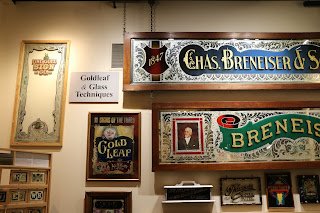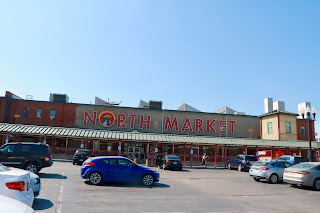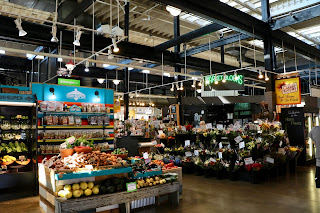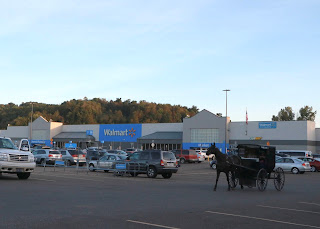Leaving Houston about 7:30AM and it is already almost 80 degrees. We head north, up I59/69 to Texarkana, then 30 and 40 across Arkansas. The cornfields are already brown here and grasses are toasty for the most part. Cotton fields look like they are about ready to be picked. We are driving long days to get north to cooler weather and places we haven’t been – or haven’t been in a long, long time.
First night we stop in West Memphis, Arkansas, just shy of the Mississippi River. It is still 90 degrees at 6:00, so we are splurging on a hotel room. We stay at a Knight’s Inn and have dinner nearby at Margarita’s, a Mexican restaurant where barely anyone speaks English. Carnitas and Pollo Bravo are pretty good.
Tuesday, September 17th
The nice man at the hotel makes us a breakfast of scrambled eggs and a waffle – we are the only folks at breakfast so he cooks it just for us! Then Greg maneuvers through Memphis and towards Nashville. Tennessee is one looooonngg state and we only go half way before getting stopped in traffic for almost 2 hours, stop and go slow…a burned 18 wheeler was the apparent cause.
At Nashville we head north into Kentucky and arrive at Mammoth Cave National Park about 2:30. After checking out the visitor’s center, we decide to take the Historical Cave Tour at 3:15 - last one of the day!
There are only 8 of us on the tour. You can feel Mother Nature’s air conditioning as we near the entrance to the cave – ahhh! We even don jackets for the 54 degree tour. Our guide is Stuart, a young man with a warm Kentucky accent.
The Kentucky cave system is extremely long (nearly 400 miles!) and diverse and has been used by man just about as long as man has been nearby – nearly 5,000 years. (The yellow is caves.)
Most of the caves are limestone and were formed by underground rivers. There are still underground rivers deep down where they have found blind cave fish, shrimp and crayfish - some unique to this environment. Our tour goes 300’ below the surface and there is another deeper level where lakes and rivers run.
Because of the nitrates from bat guano, the caves were mined in the 1800’s for salt peter, used in gunpowder; especially important during the war of 1812 with England, since till then gunpowder was imported from England! Some remnants of sluice tanks and tools remain near the entrances. (A little old company from Delaware did much of the mining – the beginnings of the DuPont business!) Over half the laborers were slaves. One man, Stephen Bishop, a self-educated slave, became a well known guide and discovered many of the passages. There is a lot of cave graffiti - most from before it became a national park, but unfortunately some people continue. This is from 1835 when tour guides were tipped to do the deed with soot.
White nose syndrome has greatly reduced the number of bats in Kentucky caves, as well as in much of the USA. We all had to walk through a solution of some sort when we exited the cave to help reduce the spread of the disease.
Unlike Carlsbad and some other famous caves, Mammoth caves are mostly dry so they lack the fabulous flows and formations. Instead there are some large rotunda rooms and wide passageways , as well as labrynths and tight squeezes (like Fat Man’s Misery). They really should issue helmets (she says, rubbing her noggin). Stairs, railings and minimum lighting have been installed for the tours which originally were given by torch or lantern light. No flash photography is allowed and it is much too dark for even the highest iso. We tried!
We head to the nearby campground next, which is about 50% occupied, so we have a nice spot with no near neighbors. Lots of squirrels and chipmunks. Cheese and crackers followed by tacos and a decent night’s sleep after it eventually cools down to the high 60’s.

Wednesday, September 18th
We revisit the Mammoth Caves Visitor’s Center this morning where they have quite an extensive display about the caves.
 |
| tobacco, some of which is cut and drying |
We take small back roads and come across Abraham Lincoln's birthplace!
Lincoln was born in this small cabin but only lived in Kentucky till he was 7. The state certainly claims him as a native son, however! This memorial to him was built in 1912 – several years before THE memorial in Washington DC. It has 56 steps, one for each year of his life.
In Lexington we head to the Kentucky National Horse Park, once again hitting heavy slow traffic. It has been created to celebrate the horse and is a working horse farm. It is also a huge tourist attraction with a regular schedule of shows, exhibits and educational features. One can also ride a horse-drawn trolley, or for an extra fee, go horseback riding. Beautiful grounds. I love their sign.
We first watch a demonstration about breeds of horses, with 5 different kinds of horses.
We visit a tack barn and learn about shoeing and shoes at a farrier’s building. Who knew there were so many different types! There are racing shoes for all sorts of conditions, so a muddy track will call for a change of shoes.
who are competing.

Lastly, we visit the Hall of Champions which features films of past Kentucky Derby winners and we are introduced to two past winners, Go For Gin (1994) and Sunny Cyde (2003). Sunny Cyde was a 90 to 1 winner, owned by 3 non-professional guys who enjoyed the races.
 |
| Go For Gin |
 |
| Sunny Cyde |
Their trainer, Jenny, is very engaging and tells us about each horse. Sunny Cyde is wearing a grazing muzzle to keep him from overeating, since it can bring on a disease ( which is what Secretariat died from). Both horses are long retired and spending their waning years here. Several other champions lived out their lives here.
Beth met this Palomino named Hank, whose stall was being cleaned. Did you know that Mr. Ed was a Palamino? And Roy Rogers' Trigger. I guess I watched them in black and white!! WOW am I old!
There are extensive pastures and all of the horses are let out in the pastures in the late afternoon and through the nights. Not all of the horses get along, particularly the stallions, so there is double fencing with a 5’ gap between fences to make sure they are separated.
Finally a museum of the horse was filled with paintings, artwork, gear and tons of information on the history of the relationship between man and horse.
 |
| terra cotta horse |
We found a place to boondock tonight called Hartig Park, which is in the general direction we are heading. It is in Kentucky; across the river from Illinois and just south of Ohio. It is WAY out in the boonies, near the Ohio River . We pass a combination of shanties, trailers, beautiful farms and this gorgeous farmhouse.
The road is windy and narrow, going to one lane some places and ends on gravel. But we have a nice, quiet night excluding the crickets and other critters, and we need a light blanket before morning!
Thursday, September 19
This morning we head for Cincinnati and stop at an LA Fitness there. Located in town, it is on the 3rdfloor of a huge older building. Very different with lots of unfamiliar equipment, but we are able to get a work out and nice long shower.
Next stop is The American Sign Museum, which friends back in Houston told us is worth a stop. And it was!

Most of the signs have interesting information. This boot sign from 1910 used lightbulbs.
This is an early Big Boy sign that has a slingshot in the back pocket and stripes instead of today’s checks. The slingshot was banned also.This is called Electric Avenue for obvious reasons.
We asked about a place to get Cincinnati Chili and are pointed to Camp Washington Chili, which is only about a half mile away. Cincinnati Chili is actually a spaghetti type dish and the spices include cinnamon (nothing hot). The place was very busy but service was quick and the chili was yummy! I had the 4-way, Greg had 5-way.
Back on the road, still heading north, our next stop was North Market in Columbus. A very old market right downtown, filled mainly with food stalls by small local businesses. Greg had a huge soft pretzel while Beth went for ice cream. This is dinner.
We are headed towards Millersburg for a Walmart in the heart of Ohio’s Amish country. We make a quick stop to check out Mohican Valley Trail’s long covered bridge. A picturesque site!
A special parking area for horse and buggies.
Next to where we parked, there was a trail exiting the parking lot just for the buggies and horses, so we heard the occasional clop clop of horses passing by. A typical Walmart otherwise and we picked up a few supplies. Quiet night, pleasant temperature.




























































No comments:
Post a Comment